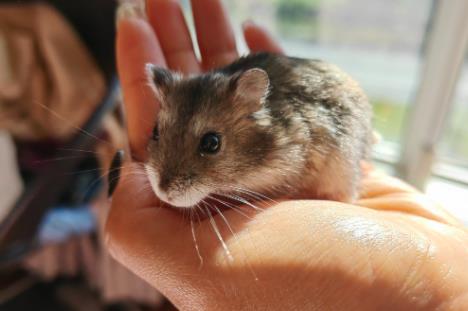Hamsters do not have menstrual periods. The reproductive system of hamsters is fundamentally different from that of humans; their physiological mechanism revolves around an estrous cycle rather than a menstrual cycle like that of humans. The detailed analysis is as follows:

I. Core Differences in the Hamster Reproductive System
No Endometrial Shedding: Human females regularly shed the unfertilized endometrium through the menstrual cycle (i.e., menstruation), but the hamster reproductive system does not exhibit such a physiological phenomenon. Its reproductive cycle is regulated by hormones such as estrogen and progesterone, with the core goal of optimizing the timing for mating and reproduction.
Estrous Cycle Dominance: The reproductive cycle of hamsters is centered on the estrous phase. Hormonal fluctuations lead to changes in fertility, but when fertilization does not occur, the hormone levels drop and the cycle directly proceeds to the next phase—there is no process of bleeding or endometrial shedding.
II. Physiological and Behavioral Characteristics of Hamsters During the Estrous Phase
Physiological Changes:
Genital Congestion: During the estrous phase, the genitals of female hamsters become congested and red, and they may discharge a pinkish fluid (caused by broken blood vessels, not menstrual blood).
Vulvar Swelling: The vulva of female hamsters swells significantly when in estrus, and the testicles of male hamsters also enlarge.
Behavioral Changes:
Female Hamsters: They will lift their tails to attract male hamsters, frequently lick their genitals, and may repel male hamsters. If a male hamster keeps approaching and the female is unwilling to mate, fights may occur.
Male Hamsters: They will secrete substances from their scent glands and leave them on surrounding surfaces in an attempt to attract female hamsters.
III. Regularity of the Hamster Estrous Cycle
Cycle Length: The estrous cycle of hamsters is generally 3 to 4 days, and female hamsters ovulate once every 4 days.
Estrus Timing: Signs of estrus mostly appear at night when hamsters are active, and each estrous period can last for approximately 12 hours. If mating is unsuccessful the first time, another attempt can be made after 4 days.
IV. Possible Causes of Abnormal Excretion in Hamsters
If you observe blood in your hamster’s excrement or notice that the excrement is cloudy, you should be alert to the following health issues:
Urinary or Reproductive Tract Infections: Such as cystitis and pyometra.
Urinary Calculi (Bladder Stones): Excessive consumption of a high - protein, high - calcium diet may lead to urinary calcium, and the urine may turn red after oxidation.
Dietary Factors: Eating foods rich in red pigments (such as carrots and beets) or consuming too much vitamin C may cause the urine to turn red.
Drug Reactions: For example, taking medications like meloxicam may cause adverse reactions such as hematuria (blood in urine).
